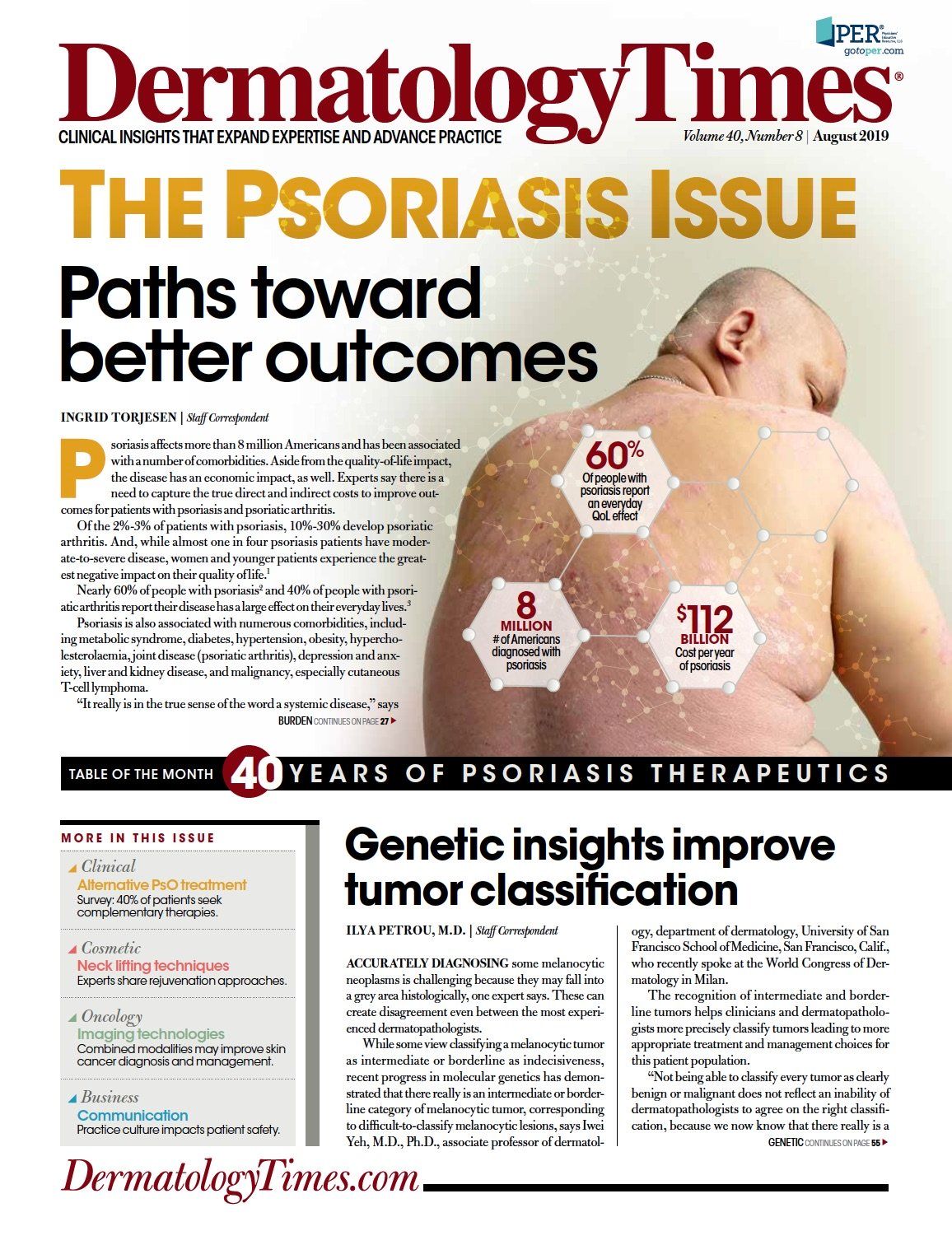- Case-Based Roundtable
- General Dermatology
- Eczema
- Chronic Hand Eczema
- Alopecia
- Aesthetics
- Vitiligo
- COVID-19
- Actinic Keratosis
- Precision Medicine and Biologics
- Rare Disease
- Wound Care
- Rosacea
- Psoriasis
- Psoriatic Arthritis
- Atopic Dermatitis
- Melasma
- NP and PA
- Skin Cancer
- Hidradenitis Suppurativa
- Drug Watch
- Pigmentary Disorders
- Acne
- Pediatric Dermatology
- Practice Management
- Prurigo Nodularis
- Buy-and-Bill
Publication
Article
Dermatology Times
HIFU offers visible improvements
Author(s):
Nasolabial, jawline, submental and neck - all areas show improvement with HIFU treatment, but one ranks best in a recent study.
@MariaMedvedva, Shutterstock.com

In a single-center study of 75 patients, including two men, high-intensity focused ultrasound (HIFU) treatment visibly improved the nasolabial, jawline, submental and neck areas.
Two independent dermatologists who evaluated the HIFU patients three months post-treatment reported that each area improved 80% or more. Patient satisfaction scores at three months were satisfactory or higher.
HIFU induces cellular damage and volume reduction in the treatment area. Delivered noninvasively, HIFU energy causes micro-coagulation zones from the deep dermis to the superficial musculoaponeurotic system, or SMAS. This tightens skin by contracting and remodeling collagen, according to the Turkish researchers.
“Focused ultrasound is superior to other pre-existing skin tightening technologies because of its capability to reach deeper tissues,” they write.
One of the dermatologist authors performed HIFU using the Doublo-S by Hironic device. Using two different probes - one with a focal depth of 3 mm and another with 4.5 mm - the physician delivered one HIFU session for each patient of about 400 to 500 shots, depending on the treatment area size. Patients ranged in age from 37 to 75 years and had Fitzpatrick skin types from II to IV. All complained of wrinkles.
Physician evaluators compared photos of the treated patients at baseline to 90 days post HIFU treatment of the nasolabial, jawline, submental and neck areas. They used a 4-point scale, with 0 being no improvement and 4 representing excellent improvement. The ratings by both doctors were excellent in nearly 19% of cases, with the best results reported in the neck area. At least 66% of cases moderately improved, according to the evaluators. Patient satisfaction scores were highest, at 86.7% for HIFU treatment results around the jawline.
In no cases did evaluators see no improvement or mild improvement - their evaluations were all in the mild-to-moderate, moderate and excellent categories.
The authors reported no correlation between clinical improvement and age.
Twenty-seven, or 36%, of the 75 patients experienced a treatment-related adverse event, with the most common being pain and transient erythema. One patient had numbness in the mandibular area, which resolved within 10 days without treatment, according to the study. Other researchers have reported rare neurologic complications from HIFU.
“Although the exact mechanism of nerve injury after HIFU treatment is unknown, shrinkage and retraction at SMAS that is caused by the deep penetration of HIFU and the thermal energy may lead to the injury of the nerve branches distributed in SMAS,” they write.
The authors suggest use of moderate energy settings might be safer.
References:
AÅiran Serdar, Z, AktaÅ Karabay, E, Tatlıparmak, A, Aksoy, B. Efficacy of highâintensity focused ultrasound in facial and neck rejuvenation. J Cosmet Dermatol. 2019;00:1– 6.






